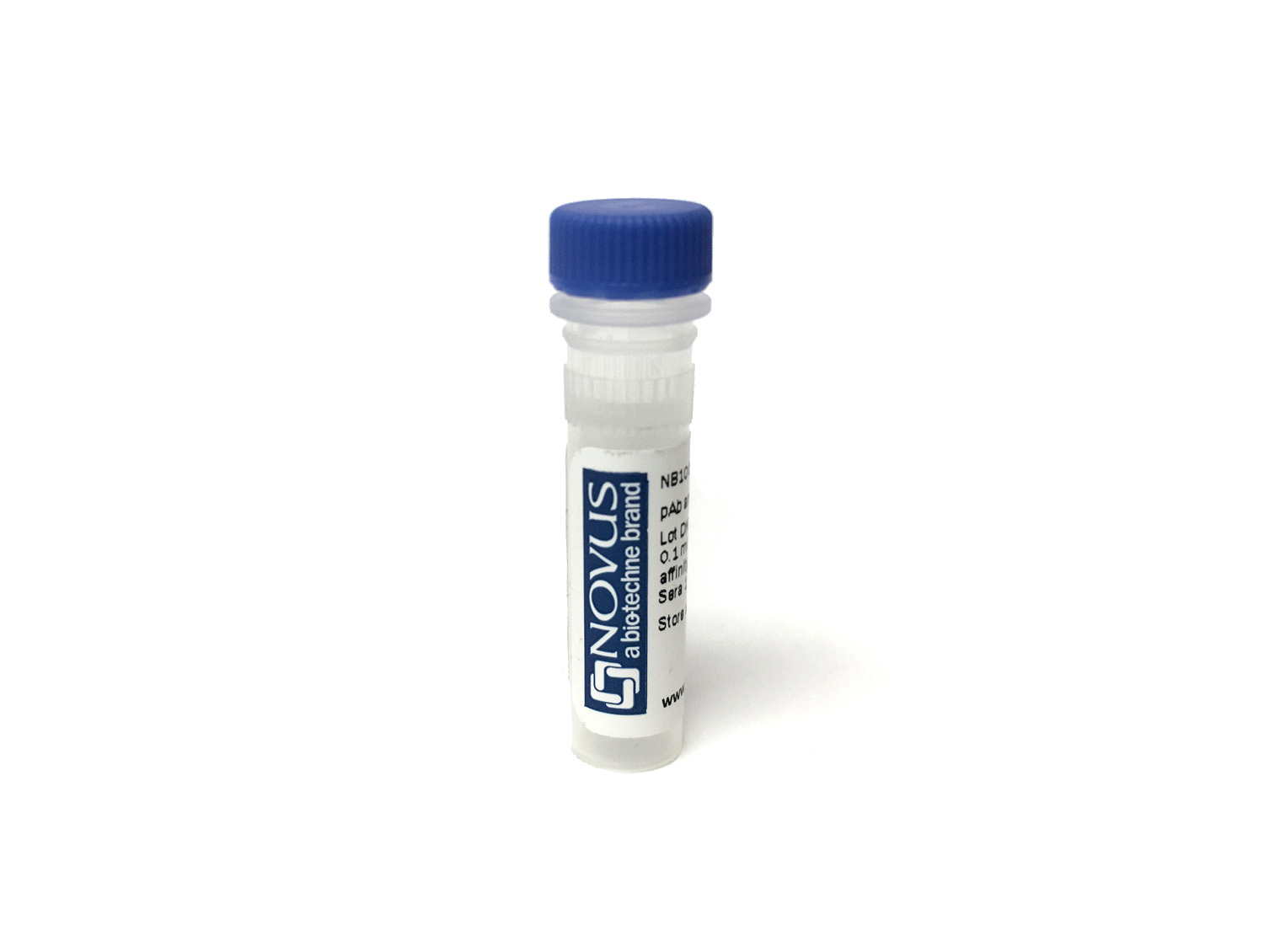His Tag Antibody - Azide and BSA Free
Novus Biologicals, part of Bio-Techne | Catalog # NBP1-46791

Key Product Details
Species Reactivity
Epitope Tag
Applications
Immunohistochemistry, Western Blot
Label
Unconjugated
Antibody Source
Polyclonal Rabbit IgG
Format
Azide and BSA Free
Concentration
LYOPH mg/ml
Product Specifications
Immunogen
Synthetic His Tag conjugated to blue carrier protein was used as the antigen.
Reactivity Notes
Reacts with His tag (HHHHHH) expressed in any organism.
Clonality
Polyclonal
Host
Rabbit
Isotype
IgG
Applications for His Tag Antibody - Azide and BSA Free
Application
Recommended Usage
Immunohistochemistry
10 - 50 ug/mL
Western Blot
10 - 50 ug/mL
Formulation, Preparation, and Storage
Purification
Ammonium sulfate precipitation
Reconstitution
Reconstitute 0.5 mg size in 0.5 ml of sterile water. Centrifuge to remove any insoluble material. Glycerol may be added (1:1) for additional stability. Please note the 0.1 mg size is provided in reconstituted format.
Formulation
Sterilized water
Format
Azide and BSA Free
Preservative
No Preservative
Concentration
LYOPH mg/ml
Shipping
The product is shipped at ambient temperature. Upon receipt, store it immediately at the temperature recommended below.
Stability & Storage
Store at 4C short term. Aliquot and store at -20C long term. Avoid freeze-thaw cycles.
Background: His Tag
References
1. Malhotra, A. (2009). Tagging for protein expression. Methods in Enzymology, Guide to Protein Purification, 2nd Edition, 463, 239-258. https://doi.org/10.1016/s0076-6879(09)63016-0
2. Terpe, K. (2003). Overview of tag protein fusions: from molecular and biochemical fundamentals to commercial systems. Applied Microbiology and Biotechnology, 60(5), 523-533. https://doi.org/10.1007/s00253-002-1158-6
3. Booth, W. T., Schlachter, C. R., Pote, S., Ussin, N., Mank, N. J., Klapper, V., ... Chruszcz, M. (2018). Impact of an N-terminal polyhistidine tag on protein thermal stability. ACS Omega, 3(1), 760-768. https://doi.org/10.1021/acsomega.7b01598
Long Name
Histidine Tag
Alternate Names
polyHistidine
Additional His Tag Products
Product Documents for His Tag Antibody - Azide and BSA Free
Product Specific Notices for His Tag Antibody - Azide and BSA Free
This product is for research use only and is not approved for use in humans or in clinical diagnosis. Primary Antibodies are guaranteed for 1 year from date of receipt.
